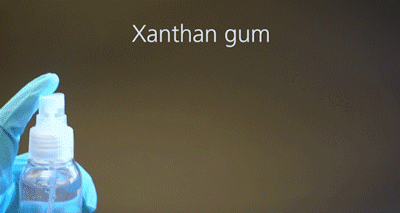
The difference between soluble polymers and cellulose fibrils
Ole Martin Kristiansen | October 24, 2017
Water soluble polymers have been used for decades, bringing various functionalities to a high number of applications. The reason for their popularity is the ability to being customized by changing molecular weight and molecular chain length, their high efficiency in use (especially the ones with high molecular weight), and their relatively simple handling. However, in certain cases polymeric viscosifiers fail to offer the needed performance and microfibrillated cellulose can offer exactly the desired properties.
Similarities and differences in the rheological performance of polymers and cellulose fibrils
As mentioned in the introduction, especially high molecular mass polymers are efficient to increase the viscosity of a solution. The long polymer chains entangle and interact with each other, creating resistance to flow and increasing the viscosity. The viscosity can be controlled by changing the concentration of the polymer or the properties of the polymer, such as molecular mass, branching or chemical composition. Under flow, the entanglements and coiled polymer chains open and stretch along the flow which leads to reduced viscosity. After shearing, the polymer chains gradually get their original conformation back and the viscosity is normally regained. Both shear-thinning behavior and viscosity recovery are often desired rheological properties.
There are, however, limitations for the use of polymeric viscosifiers. For example, the shear-thinning behavior and viscosity recovery show slight time delay. In addition, the polymer chains can be sensible for high shear (especially the high molecular weight polymers), salts, pH and temperature (viscosity is typically dependent on the temperature). This can lead to a situation where the formulation stability or flow properties fail. Changing to a different type of rheology modifier can be the solution in those cases. Microfibrillated cellulose creates the viscosity and rheology properties with different mechanism than polymers.
The cellulose fibrils are flexible particles which makes them first of all more resistant to environmental factors, meaning that they tolerate shear very well, the viscosity is not dependent on the temperature and they are not damaged by salts or chemicals. Moreover, the adaptation on shear or viscosity recovery is very quick. This is nicely demonstrated by the spray properties of microfibrillated cellulose and xanthan gum.

Figure 1 shows how differently these two rheology modifiers behave even if they have same viscosity. Both suspensions have 1% dry content and viscosity of 4300 cP. However, when they are sprayed from a normal spray bottle, cellulose fibrils give a nicely spread pattern without dripping whereas xanthan gum does not spread well and shows dripping afterwards. This is due to the shear thinning behavior of microfibrillated cellulose enabling the easy spraying and very fast viscosity recovery after shearing (spray process).

Figure 1. Microfibrillated cellulose (Exilva, Borregaard) and xanthan gum (Cosphaderm X17, Cosphatec) as 1% suspensions. Both suspensions have similar viscosity (4300 cP measured with Brookfield viscometer at 10 rpm) and they were sprayed from a spray bottle to a vertical surface. The spray of cellulose fibrils spreads nicely over the surface (on the right) whereas xanthan gum makes a concentrated spot with dripping.
Incorporation and dispersion: where water soluble polymers and cellulose fibrils differ
Incorporation of polymer rheology modifiers or cellulose microfibrils into a formulation has different requirements. The dispersion of cellulose fibrils is one of the most critical success criterias. Where the production systems are typically set up to handle the water soluble polymers (which in many cases can be incorporated more easily), this has in my experience been a barrier in switching to the non-soluble cellulose fibrils. On the other hand, microfibrillated cellulose tolerates high shear, giving the opportunity to add it before high shear process steps. If you are interested in reading more on processing with cellulose fibrils, my colleague Justin Scarpello has a very interesting post on the topic.
If you disperse cellulose fibrils correctly, it will rapidly show effects. In many processes, the viscosity increase will happen without any time delay, and viscosity increase will be a direct consequence of how much you dose. There are some stress tests you can do in order to make sure that you have succeeded with your dispersion. One of them can be found here. Another aspect I like with the cellulose fibrils is the chance it gives to producers where the pH during production or in the end product is very low (pH 1-2) or very high (pH 13-14). This is where the water soluble polymers typically have limitations. A potential to you perhaps. So if you are in a situation where some of the above mentioned aspects seems correct, it could be worthwhile giving the cellulose fibrils a thought.
